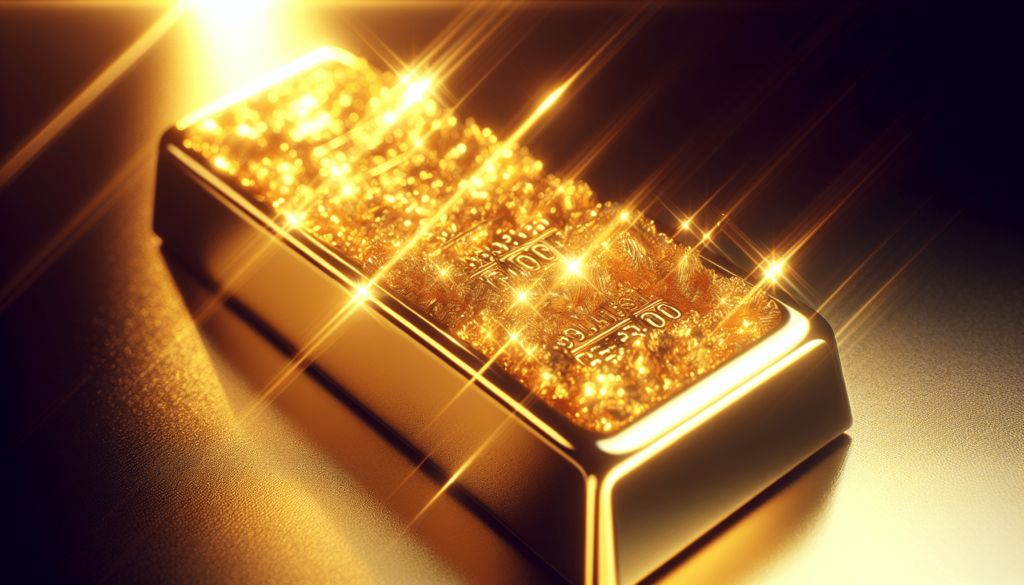Have you ever wondered why gold has such a radiant shine? Let’s delve into the science behind it and uncover the secrets of this precious metal.
The Basics of Gold
Gold is a chemical element with the symbol Au (from Latin: aurum) and atomic number 79. Its atomic mass of 196.966569 makes it one of the heaviest elements known on Earth. Gold is a soft, dense, malleable, and ductile metal with a bright yellow color that has been highly valued throughout history for its beauty and rarity.
Gold is considered a noble metal because of its resistance to corrosion and oxidation in most environments. This unique property is what allows gold to maintain its radiant shine over time, making it a popular choice for jewelry and other decorative items.
The Atomic Structure of Gold
Gold atoms have 79 protons in the nucleus and are surrounded by 79 electrons in various energy levels or shells. The outermost electron shell of gold contains only one electron, making it highly reactive. However, gold forms stable compounds due to the relativistic effects that come into play at the atomic level.
The arrangement of electrons in gold’s atomic structure contributes to its unique properties, including its luster and conductivity. The movement of electrons within the metal generates an electrical conductivity that is essential for various technological applications.
The Role of Light in Gold’s Shine
The brilliant shine of gold is primarily due to its interaction with light. When light hits a gold surface, it undergoes a process called reflection, where the light waves bounce off the surface and back to our eyes. However, gold’s reflective properties are more complex and fascinating than just simple reflection.
Reflection of Light by Gold
Gold is an excellent reflector of both visible light and infrared radiation. The shiny surface of gold reflects most of the incident light, giving it a striking and radiant appearance. The interplay between the incoming light waves and the electrons in the gold atoms results in the specular reflection that enhances the metal’s shine.
The unique combination of reflectivity and absorption of different wavelengths of light is what gives gold its distinct golden hue. The interaction between light and gold contributes to its luxurious appearance and desirability in various industries.

The Influence of Alloying on Gold’s Shine
While pure gold possesses a beautiful shine, it is often alloyed with other metals to enhance its properties and durability. The addition of alloying elements can impact the shine and color of gold, creating different shades and textures.
Alloys and Gold’s Luster
Gold alloys are created by mixing gold with other metals such as silver, copper, zinc, or nickel to improve its strength and durability. These alloying elements can alter the shine of gold, making it brighter, paler, or even redder depending on the composition.
For example, white gold is a popular alloy that combines gold with white metals like palladium or nickel to give it a silvery appearance. Rose gold, on the other hand, contains a higher proportion of copper, which imparts a warm and rosy hue to the metal. The careful selection and combination of alloying elements contribute to the diverse range of gold colors and finishes available in the market.
Surface Treatments for Gold
In addition to alloying, surface treatments can also play a role in enhancing gold’s shine. Techniques such as polishing, plating, and coating are commonly used to improve the luster and brilliance of gold jewelry and objects.
Polishing involves buffing the surface of gold to remove scratches, dents, and imperfections, resulting in a smooth and reflective finish. Plating, on the other hand, involves depositing a thin layer of a different metal like rhodium or platinum onto the surface of gold to enhance its luster and durability. Coating with materials like clear lacquer or enamel can also protect the gold surface from tarnishing and maintain its shine over time.
The Science of Gold Nanoparticles
Gold nanoparticles are tiny particles of gold that exhibit unique optical, electrical, and thermal properties due to their small size and high surface area. These nanoparticles have been extensively studied for their applications in various fields, including medicine, electronics, and catalysis.
Optical Properties of Gold Nanoparticles
One of the most intriguing aspects of gold nanoparticles is their optical properties, which differ from those of bulk gold. Gold nanoparticles exhibit a phenomenon known as localized surface plasmon resonance (LSPR), where the collective oscillation of free electrons on the nanoparticle surface absorbs and scatters light at specific wavelengths.
The size, shape, and composition of gold nanoparticles influence their optical properties, making them tunable to different colors and intensities. By controlling these factors, researchers can design nanoparticles with specific optical properties for applications such as sensing, imaging, and photothermal therapy.
Applications of Gold Nanoparticles
Gold nanoparticles have found diverse applications in medicine, particularly in diagnostic imaging and drug delivery. By functionalizing the nanoparticle surface with targeting molecules, researchers can selectively deliver drugs or imaging agents to specific tissues or cells in the body.
In addition to medicine, gold nanoparticles are also utilized in electronics for their conductive properties and catalysis for their high surface area and reactivity. These versatile nanoparticles have opened up new avenues for research and innovation in various industries, highlighting the importance of understanding the science behind their unique properties.

Analyzing Gold’s Radiant Shine
The beauty and brilliance of gold have captivated humanity for centuries, inspiring art, culture, and science. By decoding the science behind gold’s radiant shine, we gain a deeper appreciation for this precious metal and its significance in our lives.
Spectrophotometry and Gold
Spectrophotometry is a powerful analytical technique used to measure the absorption, transmission, and reflection of light by materials like gold. By analyzing the interaction of light with gold samples at different wavelengths, researchers can obtain valuable information about the metal’s optical properties and behavior.
Using spectrophotometric measurements, scientists can determine the reflectance, transmittance, and absorbance spectra of gold to understand how it interacts with light. This quantitative data provides insights into the factors that contribute to gold’s radiant shine and helps in the characterization of gold samples in various applications.
Reflection Spectra of Gold
The reflection spectrum of gold describes how the metal reflects light at different wavelengths, contributing to its distinctive color and luster. Gold exhibits a strong reflection peak in the visible spectrum around 500 nm, which is responsible for its golden hue and brightness.
By analyzing the reflection spectra of gold samples, researchers can identify the optical properties and surface characteristics that influence the metal’s shine. This detailed insight into the reflection behavior of gold helps in optimizing its appearance and quality for different purposes, from jewelry to electronics.
The Allure of Gold in Art and Culture
Gold has held a special place in human culture and society for millennia, symbolizing wealth, power, and prestige. Its radiant shine has been celebrated in art, architecture, and fashion, reflecting the enduring appeal of this precious metal.
Gold in Ancient Civilizations
In ancient civilizations like Egypt, Mesopotamia, and Mesoamerica, gold was revered as a symbol of the sun and the divine. The dazzling brilliance of gold jewelry, artifacts, and ornaments indicated the status and importance of individuals in society, elevating gold to a sacred and revered material.
The use of gold in religious rituals, burial practices, and royal regalia further emphasized its significance as a symbol of purity, eternity, and immortality. The intricate craftsmanship and artistic expressions of gold objects from antiquity continue to inspire awe and admiration, highlighting the enduring allure of this precious metal.
Gold in Contemporary Art
In modern and contemporary art, gold remains a popular material for artists exploring themes of wealth, luxury, and value. The luminous shine and opulent appearance of gold leaf, paint, and foil add a sense of grandeur and opulence to artworks, installations, and sculptures.
Artists like Gustav Klimt, Yves Klein, and Anish Kapoor have used gold in innovative ways to convey emotional, social, and cultural meanings in their works. Whether as a symbol of excess and decadence or a reflection of inner light and spirituality, gold continues to captivate artists and audiences with its radiant presence and timeless aura.
Conclusion
Gold’s radiant shine is a result of its unique physical and chemical properties that interact with light to create a dazzling effect. By understanding the science behind gold’s luster, we can appreciate the beauty and allure of this precious metal in a new light. Whether in jewelry, technology, or art, gold’s radiant shine will continue to captivate and inspire us for generations to come.

